Youngchan Kim
Spectral and Polarization Vision: Spectro-polarimetric Real-world Dataset
Nov 30, 2023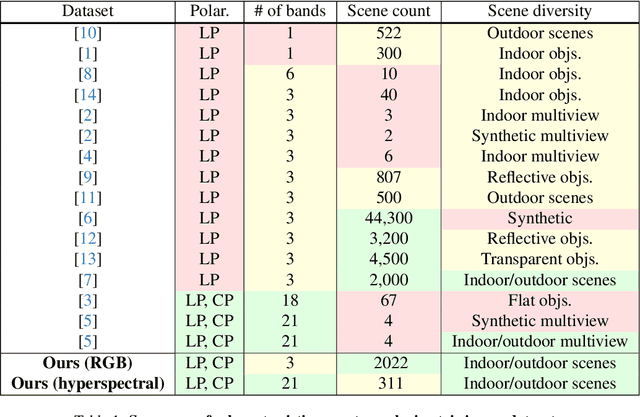
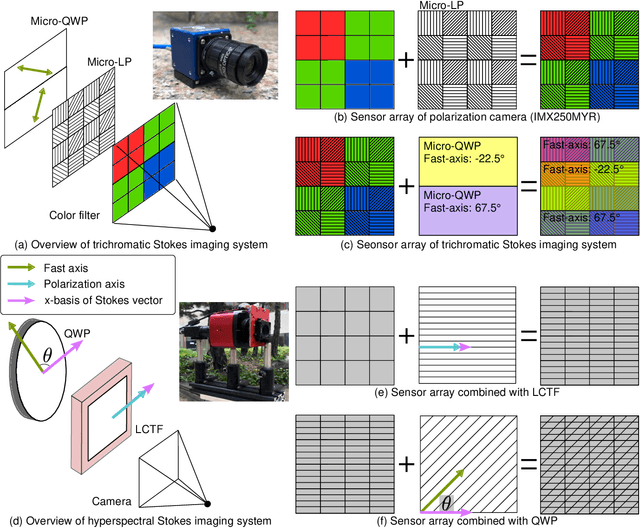
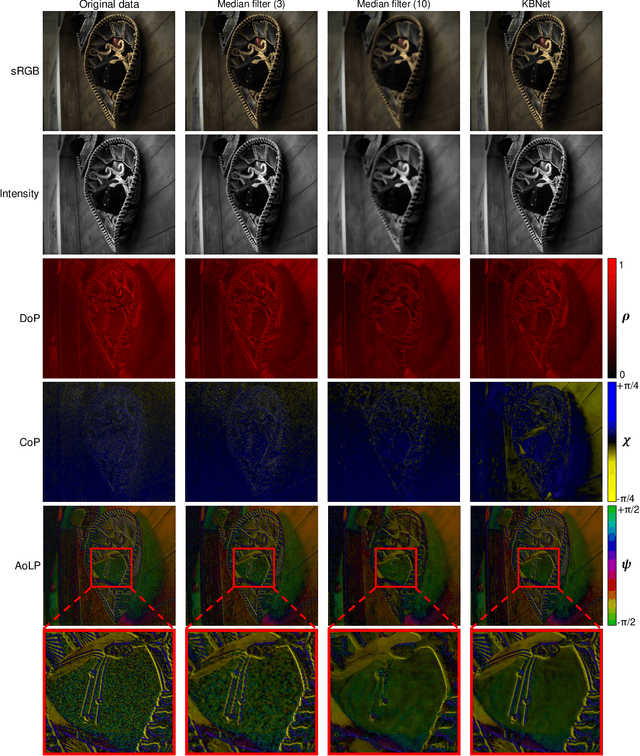

Abstract:Image datasets are essential not only in validating existing methods in computer vision but also in developing new methods. Most existing image datasets focus on trichromatic intensity images to mimic human vision. However, polarization and spectrum, the wave properties of light that animals in harsh environments and with limited brain capacity often rely on, remain underrepresented in existing datasets. Although spectro-polarimetric datasets exist, these datasets have insufficient object diversity, limited illumination conditions, linear-only polarization data, and inadequate image count. Here, we introduce two spectro-polarimetric datasets: trichromatic Stokes images and hyperspectral Stokes images. These novel datasets encompass both linear and circular polarization; they introduce multiple spectral channels; and they feature a broad selection of real-world scenes. With our dataset in hand, we analyze the spectro-polarimetric image statistics, develop efficient representations of such high-dimensional data, and evaluate spectral dependency of shape-from-polarization methods. As such, the proposed dataset promises a foundation for data-driven spectro-polarimetric imaging and vision research. Dataset and code will be publicly available.
Neural Spectro-polarimetric Fields
Jun 21, 2023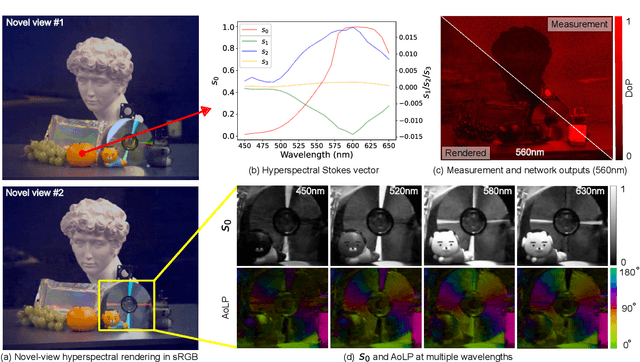
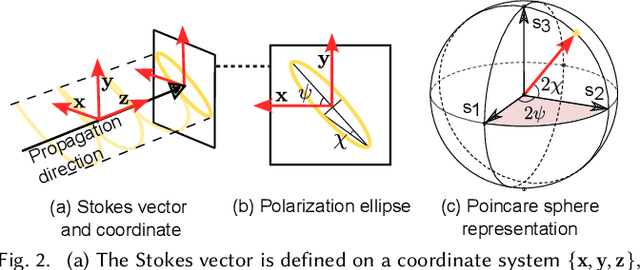

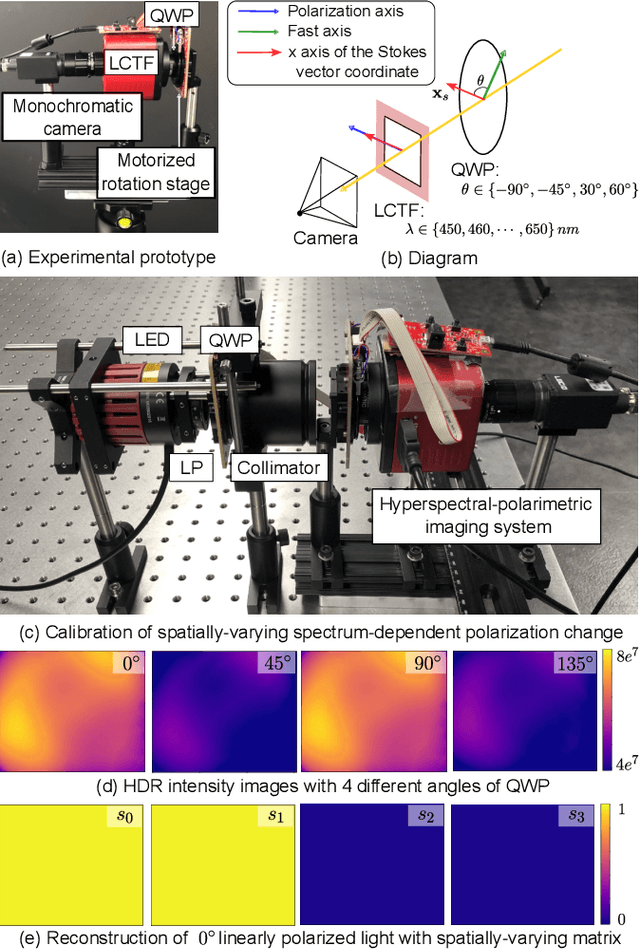
Abstract:Modeling the spatial radiance distribution of light rays in a scene has been extensively explored for applications, including view synthesis. Spectrum and polarization, the wave properties of light, are often neglected due to their integration into three RGB spectral bands and their non-perceptibility to human vision. Despite this, these properties encompass substantial material and geometric information about a scene. In this work, we propose to model spectro-polarimetric fields, the spatial Stokes-vector distribution of any light ray at an arbitrary wavelength. We present Neural Spectro-polarimetric Fields (NeSpoF), a neural representation that models the physically-valid Stokes vector at given continuous variables of position, direction, and wavelength. NeSpoF manages inherently noisy raw measurements, showcases memory efficiency, and preserves physically vital signals, factors that are crucial for representing the high-dimensional signal of a spectro-polarimetric field. To validate NeSpoF, we introduce the first multi-view hyperspectral-polarimetric image dataset, comprised of both synthetic and real-world scenes. These were captured using our compact hyperspectral-polarimetric imaging system, which has been calibrated for robustness against system imperfections. We demonstrate the capabilities of NeSpoF on diverse scenes.
 Add to Chrome
Add to Chrome Add to Firefox
Add to Firefox Add to Edge
Add to Edge